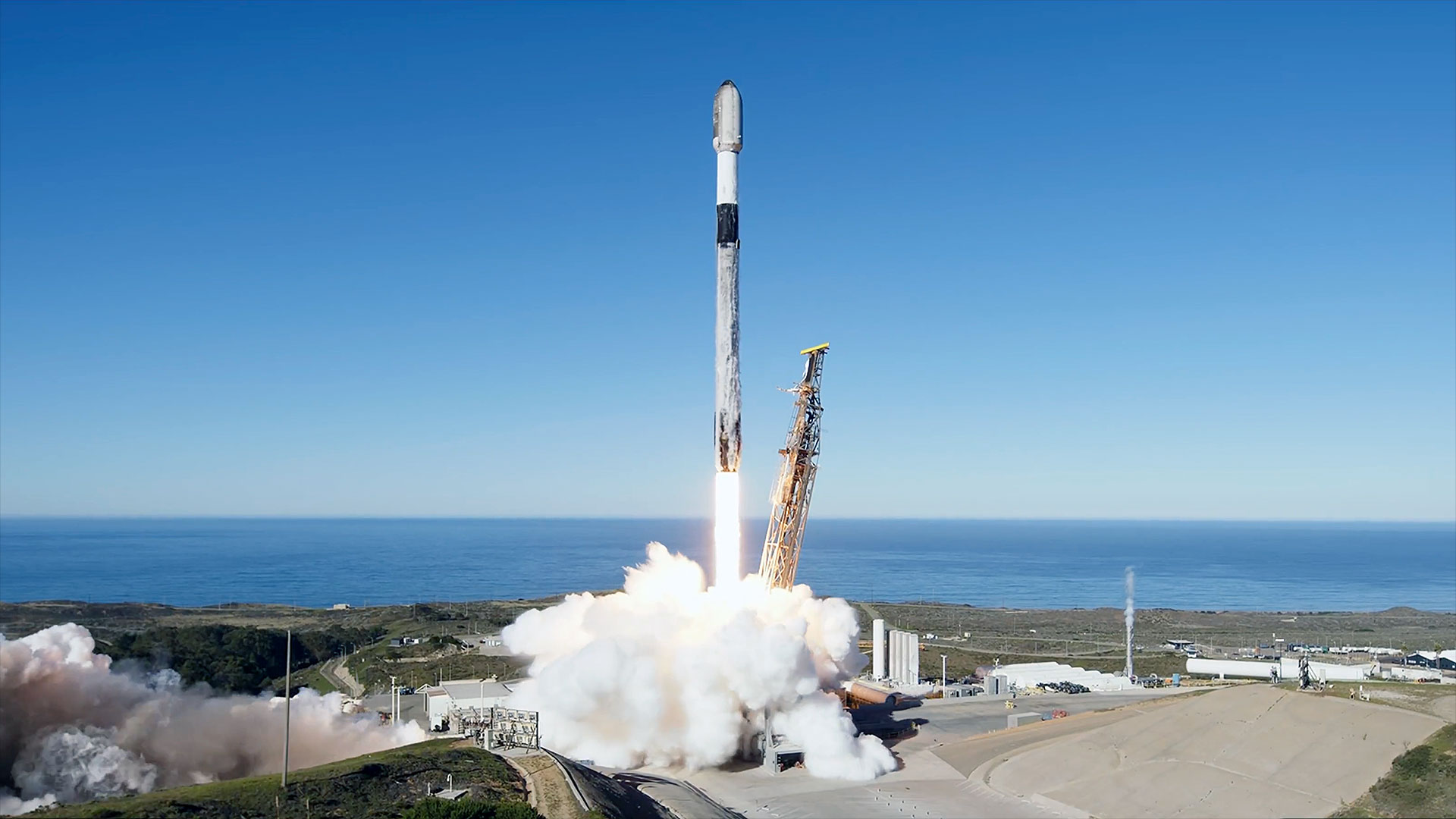Watch an SUV-size asteroid zoom by Earth in close shave flyby in this time-lapse video
Italian astronomer Gianluca Masi shared his observations of the flyby live in a webstream.
Asteroid 2023 BU zipped past Earth Thursday night (Jan. 26) to the delight of amateur astronomers worldwide. For skywatchers without access to a telescope or those who had their view hampered by bad weather, luckily the Italy-based Virtual Telescope Project was there to observe the event and livestream the whole thing for free.
The Virtual Telescope is a robotic telescope operated by Italian amateur astronomer Gianluca Masi near Rome, Italy. As 2023 BU hurtled toward Earth, the telescope was able to track the rock through a gap in the clouds when it was about 13,670 miles (22,000 kilometers) from the closest point on Earth's surface (about the altitude of the GPS navigation satellite constellation) and 22,990 miles (37,000 km) from the Virtual Telescope.
Masi, who shared an hour-long webcast of the observations on the Virtual Telescope website, wasn't able to capture the closest approach as clouds rolled in, however. Nonetheless, the Virtual Telescope Project was able to get a good look at the car-sized rock, seen in time-lapse above.
Related: NASA's DART asteroid impact won't make Dimorphos hit Earth — but here's what would happen if it did
The rock, discovered less than a week ago on Saturday (Jan. 21), passed above the southern tip of South America at 7:27 p.m. EST on Thursday Jan. 26 (0027 GMT on Jan. 27), at a distance of only 2,240 miles (3,600 km) at its closest point to Earth's surface.
This close approach makes 2023 BU the fourth nearest asteroid ever observed from Earth, with the exception of five space rocks that were detected before diving into Earth's atmosphere.
Only 11.5 to 28 feet wide (3.5 to 8.5 meters), 2023 BU posed no danger to the planet. If the trajectories of the two bodies had intersected, the asteroid would mostly have burned up in the atmosphere with only small fragments possibly falling to the ground as meteorites.
Breaking space news, the latest updates on rocket launches, skywatching events and more!
In the videos and images shared by Masi, the asteroid is seen as a small bright dot in the center of the frame, while the longer, brighter lines are the surrounding stars. In reality, of course, it was the asteroid that was moving with respect to Earth, traveling at a speed of 21,000 mph (33,800 km/h) with respect to Earth. As Masi's computerized telescope tracked its positionthe rock appeared stationary in the images while rendering the stars as these moving streaks.
The gravitational kick that 2023 BU received during its encounter with Earth will alter the shape of its orbit around the sun. Previously, the space rock followed a rather circular orbit, completing one lap around the sun in 359 days. From now on, BU 2023 will travel through the inner solar system on a more elliptical path, venturing half way toward Mars at the farthest point of its orbit. This alteration will add 66 days to BU 2023's orbital period.
The asteroid was discovered by famed Crimea-based astronomer and astrophotographer Gennadiy Borisov, the same man who in 2018 found the first interstellar comet, which now bears his name, Borisov.
Follow Tereza Pultarova on Twitter @TerezaPultarova. Follow us on Twitter @Spacedotcom and on Facebook.

Tereza is a London-based science and technology journalist, aspiring fiction writer and amateur gymnast. Originally from Prague, the Czech Republic, she spent the first seven years of her career working as a reporter, script-writer and presenter for various TV programmes of the Czech Public Service Television. She later took a career break to pursue further education and added a Master's in Science from the International Space University, France, to her Bachelor's in Journalism and Master's in Cultural Anthropology from Prague's Charles University. She worked as a reporter at the Engineering and Technology magazine, freelanced for a range of publications including Live Science, Space.com, Professional Engineering, Via Satellite and Space News and served as a maternity cover science editor at the European Space Agency.

